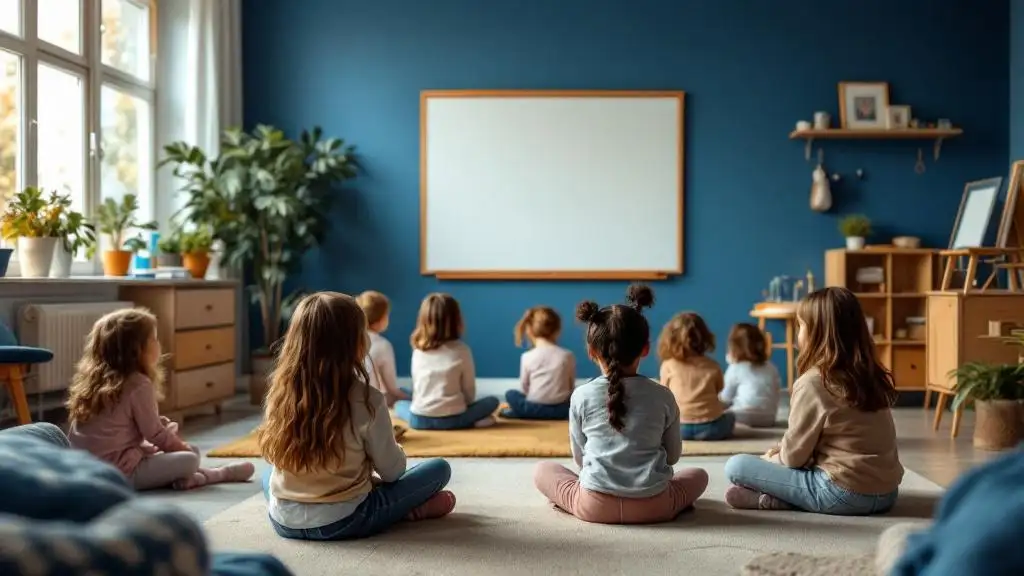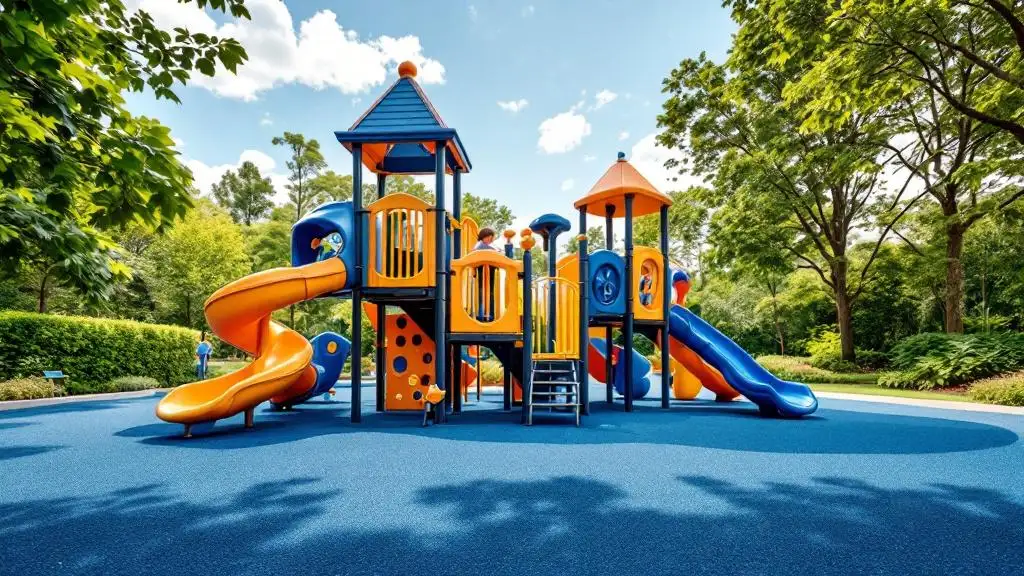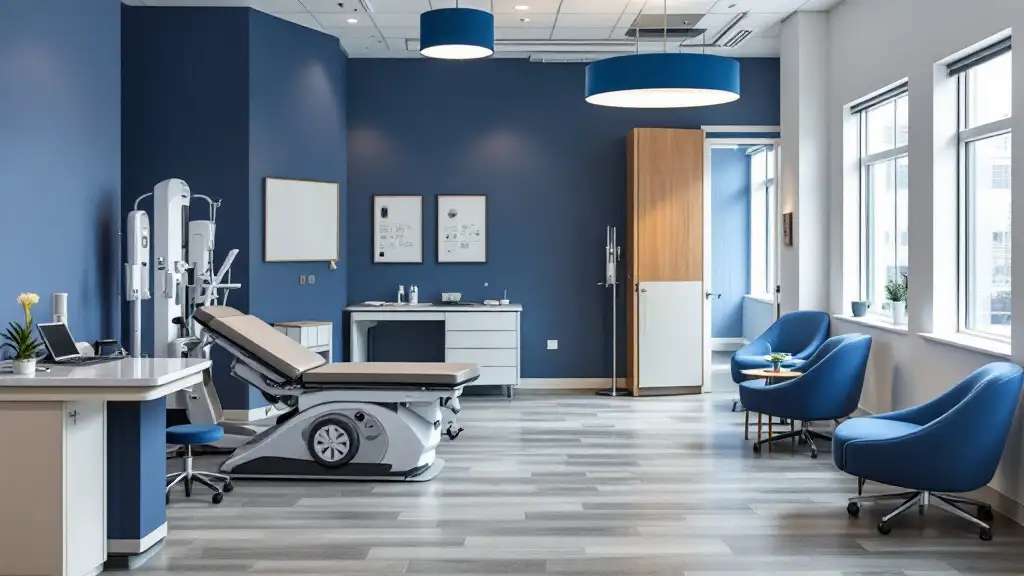
Understanding the Foundations of Gait Training in Children with Limb Loss
Gait training for children with prosthetics is a specialized field that integrates core principles of physical therapy, innovative technologies, and tailored rehabilitation strategies to support mobility, independence, and confidence. Recognizing the unique developmental and biomechanical needs of pediatric amputees, clinicians focus on restoring normal gait patterns, improving balance, and fostering long-term functional mobility through comprehensive assessments and customized interventions.
Core Principles and Techniques in Pediatric Gait Therapy

What are the core principles and techniques of physical therapy for gait training in children with prosthetics?
Pediatric gait therapy emphasizes a set of foundational principles aimed at promoting natural and efficient walking patterns in children with limb prosthetics. These include ensuring proper gait mechanics, which involves aligning steps, foot placement, and timing to resemble typical gait as closely as possible.
Therapeutic techniques focus on enhancing strength, especially in the quadriceps, hip muscles, and core, to improve stability and endurance. Balance exercises and proprioceptive training are incorporated to address the unique gait and balance deficits observed in children with limb loss. These exercises help prevent compensatory movements and secondary injuries.
A crucial element is functional independence—encouraging children to perform daily activities confidently and safely. Family involvement is emphasized, with customized exercise programs that consider the child's developmental level and goals.
Gait analysis forms a core part of therapy, utilizing methodologies like observational assessment and more advanced systems such as 3D motion capture. These evaluations identify gait deviations and guide personalized interventions.
Another vital aspect is prosthetic trial and adjustment. Regular assessments ensure the prosthetic fit, alignment, and component selection are optimal for current growth phases and activity levels.
Targeted exercises are employed to normalize gait patterns, including treadmill-based training with equipment like Biodex treadmills and practical overground walking drills. These sessions often include step training, weight-shifting, and dynamic balance activities.
Overall, the therapy's goal is to improve mobility, prevent secondary complications, and maximize participation in everyday and recreational activities, thereby enhancing the child's quality of life.
Rehabilitation Strategies and Progress Expectations

What are effective rehabilitation strategies and typical progress expectations in pediatric gait training with prosthetics?
Pediatric prosthetic gait rehabilitation adopts a personalized approach, focusing on building strength, confidence, and functional mobility gradually. Initial steps involve early interventions like pre-prosthetic exercises that maintain range of motion, muscle strength, and trunk control, which are essential to prevent gait deviations.
As recovery progresses, therapy emphasizes gait skill development through activities such as overground walking, treadmill training, balance exercises, and functional tasks like stair climbing or walking on uneven surfaces. Incorporating family involvement and addressing the child's psychosocial needs are critical for sustained motivation and engagement in rehabilitation.
Progress typically follows a timeline where children may achieve basic walking within 2-4 months, with improvements seen in gait symmetry, stability, and endurance. Over time, they work toward community mobility, which can develop over 4-6 months, depending on individual factors such as age, level of amputation, and prosthetic fit.
Technological aids like advanced prosthetic components, sensor-enhanced devices, and virtual reality systems can further optimize gait outcomes and motivation. Regular assessments and device adjustments are vital to adapt therapy as the child grows and gains more mobility.
Overall, tailored therapy programs combining strength training, balance exercises, functional tasks, and emerging technologies support steady progress toward safe, efficient, and confident ambulation in children with prosthetics.
Therapeutic Approaches to Improve Gait and Balance

What therapeutic approaches and exercises can improve gait and balance in children using prosthetic limbs?
Enhancing gait and balance in children with prosthetic limbs involves a multifaceted physical therapy program tailored to each child's needs and prosthetic type. The primary focus is on strengthening routines that bolster muscle endurance and stability. Exercises such as resistance training using Therabands, core workouts like pelvic tilts, bridges, and trunk control exercises help improve trunk stability and balance.
Balance training forms a critical part of rehabilitation, incorporating activities like standing on balance boards, single-leg stances, and weight shifting exercises to boost proprioception and postural control. Gait pattern correction is achieved through targeted gait retraining, which includes treadmill walking, obstacle courses, and step exercises to refine foot placement, stride length, and coordination.
Real-world mobility exercises are essential for functional integration. These include stair climbing, step-ups, navigating slopes or uneven surfaces, and practicing transfers from the floor to standing. Such activities simulate everyday challenges and promote confidence in various environments.
Supportive therapies also incorporate psychological aspects. Building confidence through positive feedback, gradual progression, and involvement in recreational activities helps reinforce motor learning and psychological well-being. Regular assessment and adjustment of exercises ensure that therapy remains aligned with the child's growth and capabilities.
In summary, a holistic approach that combines strength, balance, gait correction, and practical mobility exercises not only enhances physical function but also fosters independence and confidence in children with prosthetic limbs.
Innovations and Recent Research in Prosthetic Gait Technologies

What are some recent research advancements in prosthetic gait training for pediatric patients?
Recent studies in pediatric prosthetic gait training highlight the use of advanced materials and smart technologies to improve mobility and comfort for young users. Researchers are now focusing on lightweight and durable prosthetic components made from materials like carbon fiber, which can better accommodate children's growth and activity levels.
Sensor and AI technologies have been integrated into prosthetics to provide real-time feedback, analyze gait patterns, and personalize adjustments. This allows for more precise training and quicker adaptation to developmental changes.
Virtual reality (VR) systems are gaining popularity in gait rehabilitation. These systems simulate diverse terrains and scenarios, motivating children to engage actively in therapy while providing instant feedback on their movements. Such immersive experiences can accelerate learning and improve gait efficiency.
Advances in prosthetic components include microprocessor-controlled knees and multi-joint prosthetics that mimic natural limb mechanics. These innovations enhance gait symmetry, reduce energy expenditure, and improve balance, especially crucial for developing children.
To comprehensively assess gait, researchers employ multimodal evaluation methods. These combine biomechanical analysis, electrophysiological testing, and energy consumption monitoring, offering detailed insights into gait abnormalities. The data helps tailor individualized interventions, promoting better functionality.
Overall, ongoing research aims to create pediatric-specific prosthetics that grow with the child, incorporate cutting-edge technology for improved control, and support holistic rehabilitation to foster independence and confidence.
Special Considerations and Best Practices in Pediatric Prosthetic Therapy

What considerations and best practices should physical therapists keep in mind when working with children with limb loss?
Rehabilitation for children with limb loss requires a careful and tailored approach that considers their unique developmental, physical, and psychosocial needs. At the core, therapists should adapt interventions according to the child's age and motor development stage. Activities should promote the child's motor skill growth, independence, and confidence, encouraging participation in recreational and daily activities.
Regular assessments are vital for monitoring progress and prosthetic fit. Typically, evaluations are conducted every 4 to 6 months, during which growth spurts, prosthetic adjustments, and functional gains are closely examined. These assessments enable timely modifications to prosthetics and therapy plans, ensuring continued mobility and comfort.
Joint flexibility is another critical aspect. Children are prone to develop contractures due to muscle imbalances and immobilization. Proactive management strategies such as stretching routines, bracing, serial casting, and proper positioning play a crucial role in maintaining joint mobility, preventing deformities, and optimizing gait patterns.
Another important practice is multidisciplinary collaboration. A team comprising prosthetists, neuromuscular specialists, occupational therapists, and psychologists can develop comprehensive, personalized care plans. These collaborative efforts focus on normalizing movement, maximizing functional use of the prosthesis, and addressing any physical or emotional challenges.
Family involvement significantly influences success in rehabilitation. Engaging family members in therapy sessions, home exercises, and education fosters motivation and adherence to treatment. Psychosocial support, including counseling and peer support groups, helps children cope with social integration and build self-esteem, which are essential for long-term positive outcomes.
Implementing these practices ensures that children with limb loss receive holistic, effective care that promotes physical well-being, psychosocial health, and integration into everyday life.
Use of Prosthetic Components to Enhance Gait Development
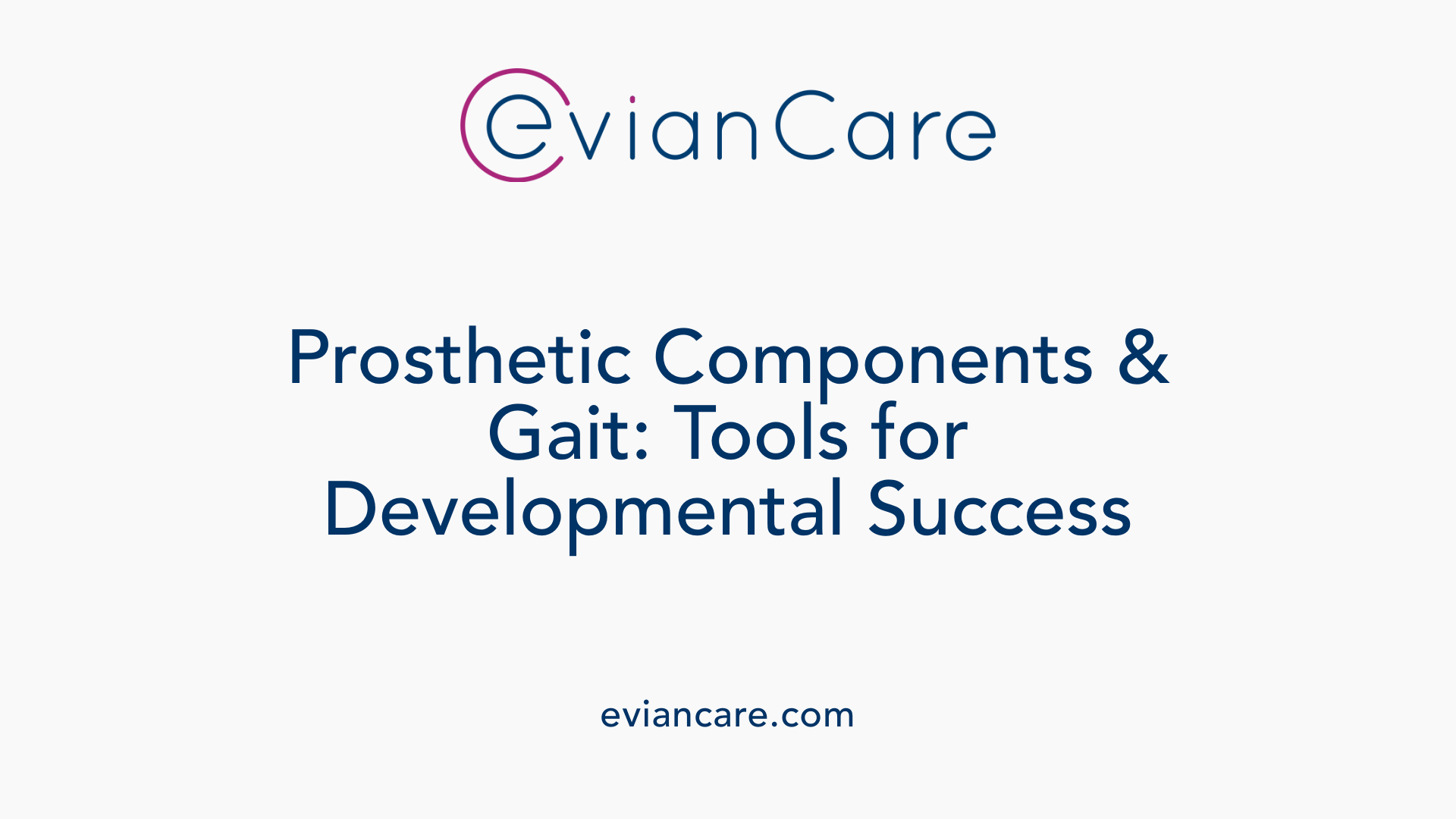
How does the use of specific prosthetic components, such as knee training devices, enhance gait development in children?
The integration of specialized prosthetic parts, like articulated knee joints and knee training devices, plays a vital role in supporting the gait development of children with limb loss. These components enable more natural knee flexion and extension during walking, especially during the swing phase.
Using these devices helps children avoid compensatory movements that often develop when prosthetic knees do not move smoothly or naturally. This leads to a gait pattern that resembles typical walking, which is important for overall mobility and stability.
Early use of advanced prosthetic components allows children to learn correct gait mechanics from the beginning. This proactive approach can prevent abnormal gait patterns that might become ingrained over time.
Moreover, powered assistive devices like exoskeletons or electronically controlled knees can improve alignment, extend limb function, and reduce excessive crouch gait. Such technologies can enhance knee extension and promote balanced weight transfer.
These prosthetic innovations support better balance, improve gait symmetry, and increase confidence in walking. As a result, children experience greater independence and participate more fully in recreational and social activities.
In summary, utilizing these specialized prosthetic components not only improves gait mechanics in children but also positively impacts their overall mobility and quality of life. Their role is crucial in supporting early gait development and long-term functional outcomes.
Extra insights
| Prosthetic Component | Function | Impact on Gait | Additional Benefits |
|---|---|---|---|
| Articulating knee joints | Mimic natural knee movement during walking | Enhances swing phase gait | Reduces gait deviations, supports natural biomechanics |
| Knee training devices | Facilitate proper knee flexion and extension | Improve gait regularity | Minimize compensations, encourage developmental learning |
| Advanced prosthetic tech | Provide powered assistance and sensory feedback | Corrects abnormal gait patterns | Promotes stability, reduces cognitive effort during walking |
By integrating these innovations, rehabilitation becomes more effective, allowing children to develop gait patterns close to their peers and participate confidently in daily activities.
Addressing Mobility Challenges and Providing Support During Gait Training
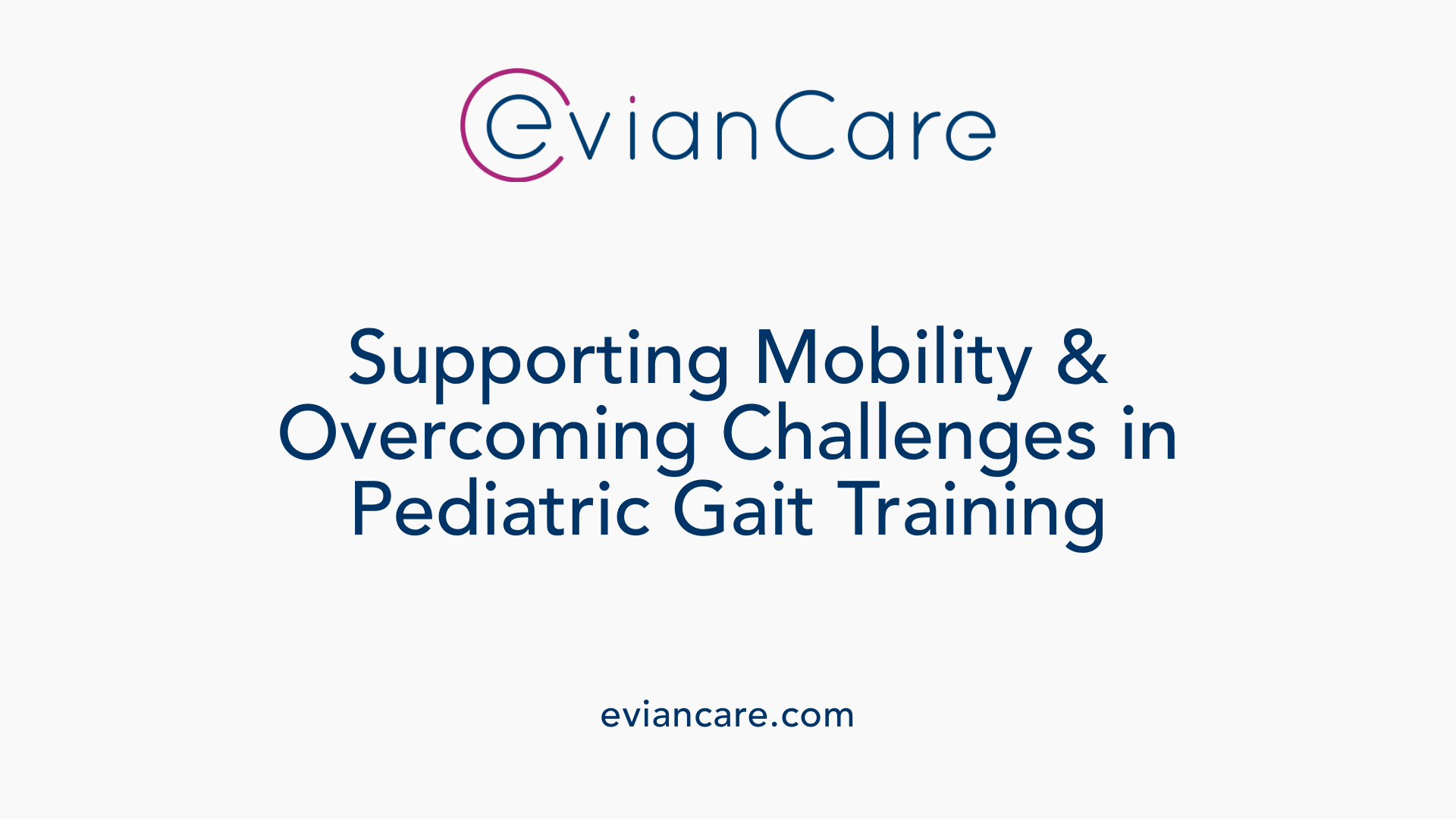
What strategies are effective in addressing mobility challenges and providing ongoing support for children during gait training?
Successfully supporting children through gait training requires a multifaceted approach tailored to each child's unique needs. Central to this is developing individualized therapy plans. These plans should focus on exercises that improve weight bearing, balance, and proprioception. For example, exercises such as lateral and forward/backward weight shifts help children develop stability, while balance board activities enhance their equilibrium. Incorporating functional tasks—like stair navigation, standing up from the floor, and running—further prepares children for real-life mobility challenges.
Prosthetic training plays a vital role, emphasizing proper center of gravity placement, gait re-education using mobility aids, and progressing to complex gait patterns such as tandem walking or multidirectional changes. These strategies improve walking efficiency and boost confidence.
Family involvement is crucial. Educating parents and caregivers about proper support techniques, encouraging emotional encouragement, and fostering positive attitudes towards prosthetic use help children feel supported and motivated. Community resources, peer support groups, and school-based programs provide additional long-term assistance.
A multidisciplinary team approach—including prosthetists, physical therapists, occupational therapists, and psychologists—ensures comprehensive care. These specialists customize interventions based on the child's developmental progress and specific functional goals.
Emerging technologies also enhance gait training outcomes. Virtual reality (VR) systems recreate terrains and scenarios to improve motivation and functional gains. Sensory feedback prosthetics, which simulate limb sensations, can boost limb awareness and control. AI-driven gait analysis offers detailed motion monitoring, helping clinicians refine interventions tailored to individual gait patterns.
Finally, regular assessment and updating of therapy plans are essential. Continuous monitoring allows therapists to adapt exercises as children grow and their abilities evolve, ensuring sustained progress towards independence and mobility.
Optimizing Outcomes in Pediatric Prosthetic Gait Rehabilitation
The journey toward effective gait mastery in children with prosthetics is dynamic and multifaceted. It requires the integration of core principles, innovative technologies, tailored rehabilitation strategies, and active family involvement. Advances in prosthetic design, including sensor-enhanced and growth-compatible devices, alongside emerging therapies such as virtual reality and AI-driven gait analysis, are revolutionizing outcomes. Continuous assessment, individualized exercises, and multidisciplinary collaboration remain central to addressing the unique developmental needs of young amputees. With ongoing research and clinical ingenuity, physical therapists can facilitate not only improved mobility but also enhanced confidence, independence, and quality of life, ensuring these children reach their full potential.
References
- Prosthetic rehabilitation
- Review Walking and balance in children and adolescents ...
- How to Walk Again After Limb Loss: Prosthetic Training & ...
- Gait in prosthetic rehabilitation
- Walking kinematics in young children with limb loss using ...
- Understanding Mobility Issues with Pediatric Prosthetics
- The Benefits of Physical Therapy After Leg Amputation
- Physical Therapy Management Involving Strength and Gait ...




